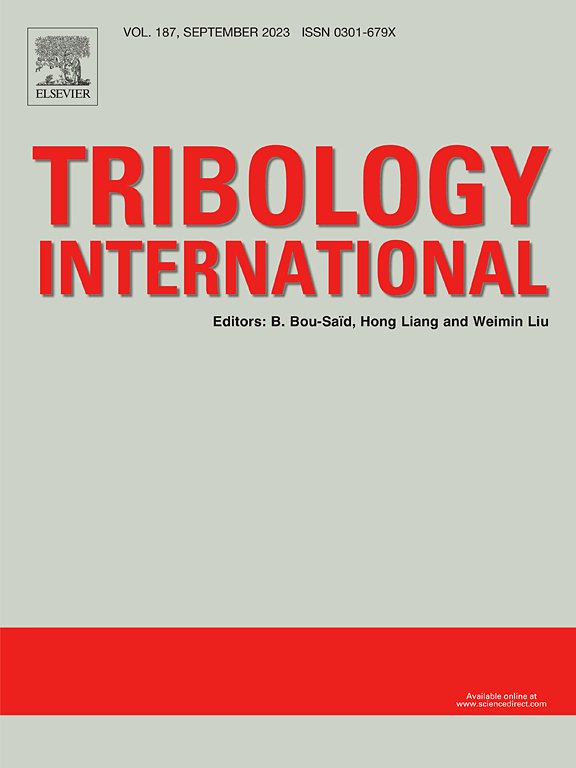Self-lubricating and wear self-healing of polymer composites reinforced with bifunctional mesoporous silica nanocontainers
IF 6.1
1区 工程技术
Q1 ENGINEERING, MECHANICAL
引用次数: 0
Abstract
Polymer-based self-lubricating materials with self-healing ability can overcome the problems of short life-span caused by external damage during friction. This paper proposes a new bifunctional mesoporous silica nanocontainer (Cu/LO@SNF) to enhance the wear self-healing and friction-reducing properties of polymer materials. Using mesoporous silica nanoflowers (SNF) as nanocontainers, Cu nanoparticles as solid lubricant additives, and linseed oil (LO) as an external healing agent. Due to silica nanoflowers' large radial pore structure, their use for loading Cu nanoparticles can effectively prevent nanoparticle aggregation. Meanwhile, silica nanoflowers can also store a large amount of LO. Cu/LO@SNF were combined with epoxy resin (EP) to endow the resin with excellent wear self-healing and anti-wear capabilities. The results of the frictional performance test indicate that the friction coefficient of EP containing 10 wt% Cu/LO@SNF can be as low as 0.085, and the wear rate is reduced by 97.8 % compared with pure EP. During the friction process, Cu NPs and linseed oil stored in silica nanocontainers are released into the contact area of the friction pair. The Cu NPs enhance tribological properties as effective lubricants and aid in repairing wear areas when used with linseed oil. The synergistic effect of Cu NPs and LO enables the wear self-healing rate of the EP to reach 77 %, effectively improving the service life of EP materials.
求助全文
约1分钟内获得全文
求助全文
来源期刊

Tribology International
工程技术-工程:机械
CiteScore
10.10
自引率
16.10%
发文量
627
审稿时长
35 days
期刊介绍:
Tribology is the science of rubbing surfaces and contributes to every facet of our everyday life, from live cell friction to engine lubrication and seismology. As such tribology is truly multidisciplinary and this extraordinary breadth of scientific interest is reflected in the scope of Tribology International.
Tribology International seeks to publish original research papers of the highest scientific quality to provide an archival resource for scientists from all backgrounds. Written contributions are invited reporting experimental and modelling studies both in established areas of tribology and emerging fields. Scientific topics include the physics or chemistry of tribo-surfaces, bio-tribology, surface engineering and materials, contact mechanics, nano-tribology, lubricants and hydrodynamic lubrication.
 求助内容:
求助内容: 应助结果提醒方式:
应助结果提醒方式:


